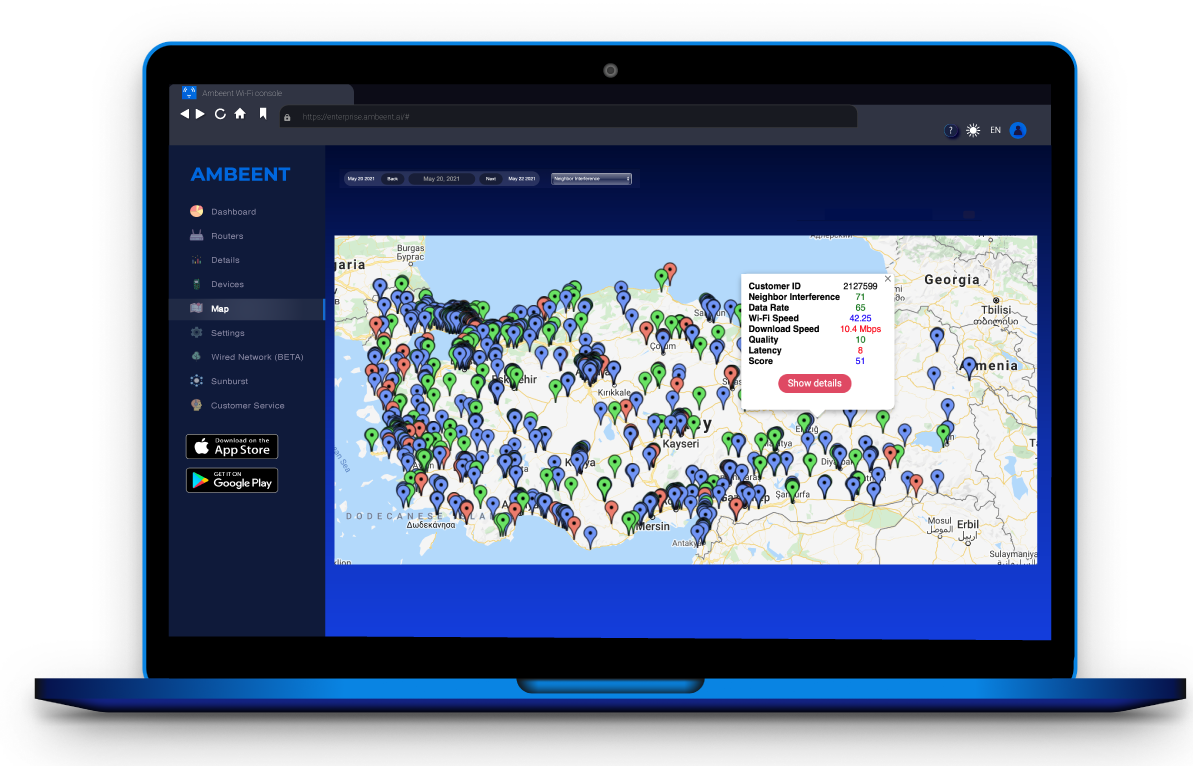Optimize digital experience for happy subscribers and a productive workforce
VISIBEEL Digital Experience Monitoring (DEM) delivers monitoring proactively and in real-time at each level of the digital value chain (network, infrastructure, device and application). VISIBEEL differentiates itself from other DEM platforms by focusing on fault or incident management and resolution, resource management, and network parameter-tuning and modification to optimize the QoE of service delivery. For real-time and proactive monitoring, integrate the Ambeent SDK into an application owned by your organization, or download the Ambeent App on mobile devices through Google Play or Apple App Store, or on desktops. Deploy browser-based plugins on desktops or laptops to monitor application performance of end-users in real-time.
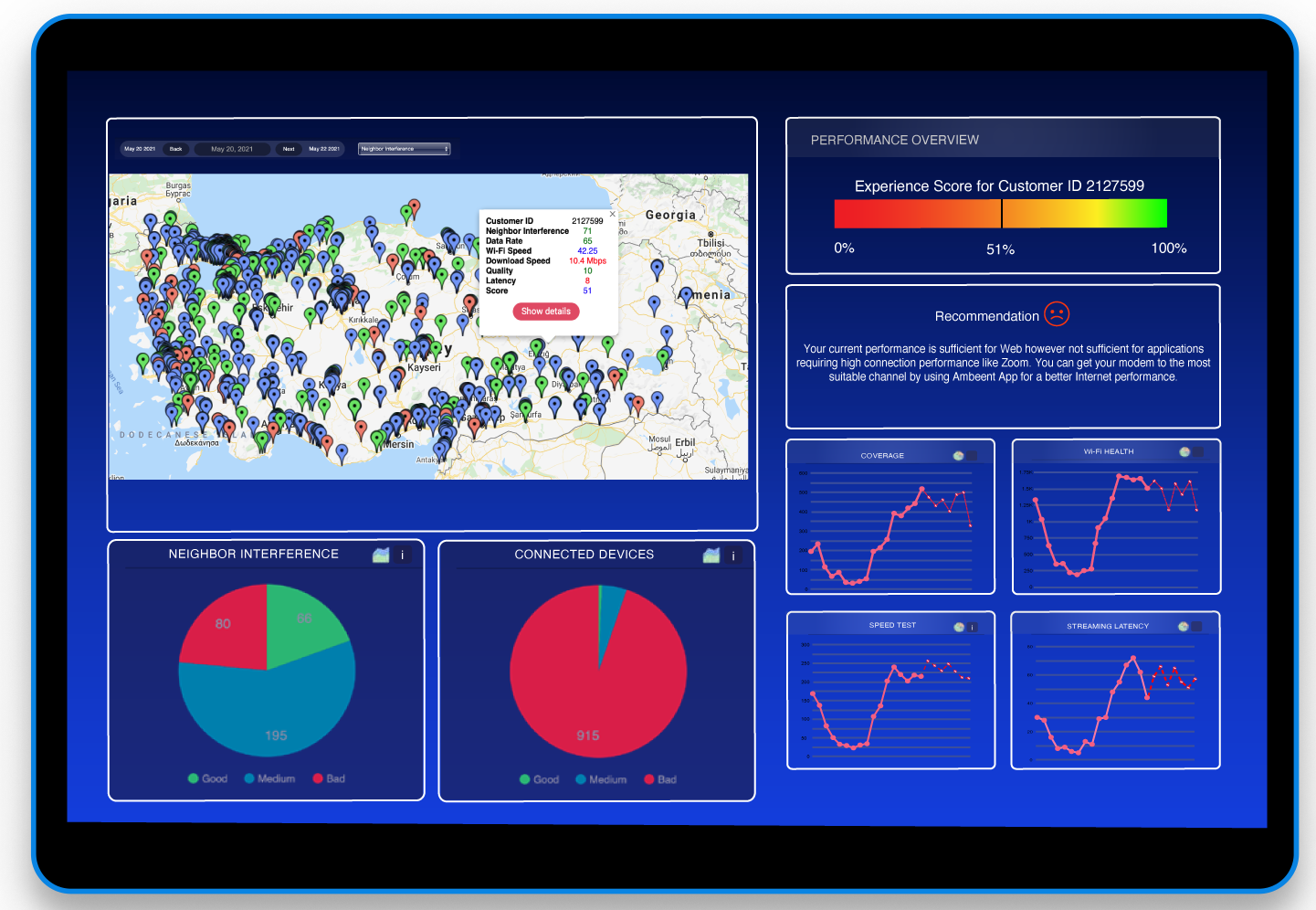
Granular and customized DEM
Handling different types of applications and service infrastructure in detail for different types of clients
QoE scoring and smart issue resolution
Proactive and real-time QoE scoring and dynamic solutions to improve performance
All-in-one experience Console
Easy-to-view, customizable Console to help organizations achieve their strategic objectives
The VISIBEEL Client Console enables service provider and enterprise network teams to see and understand the performance of their IT operations and manage their resources more effectively. The Console is customized to meet the strategic objectives of different organizations (ISP networks, work-from-home, on-premise enterprises, etc.).
Acquire full insight into traffic flow during peak times or work hours and the applications used by subscribers or employees, and obtain comprehensive QoS/QoE metrics
Monitor a single subscriber or employee, or all subscribers and employees, in a given region or globally through geolocation maps
Gain actionable insights for future network-planning and resource optimization based on historical data analytics.
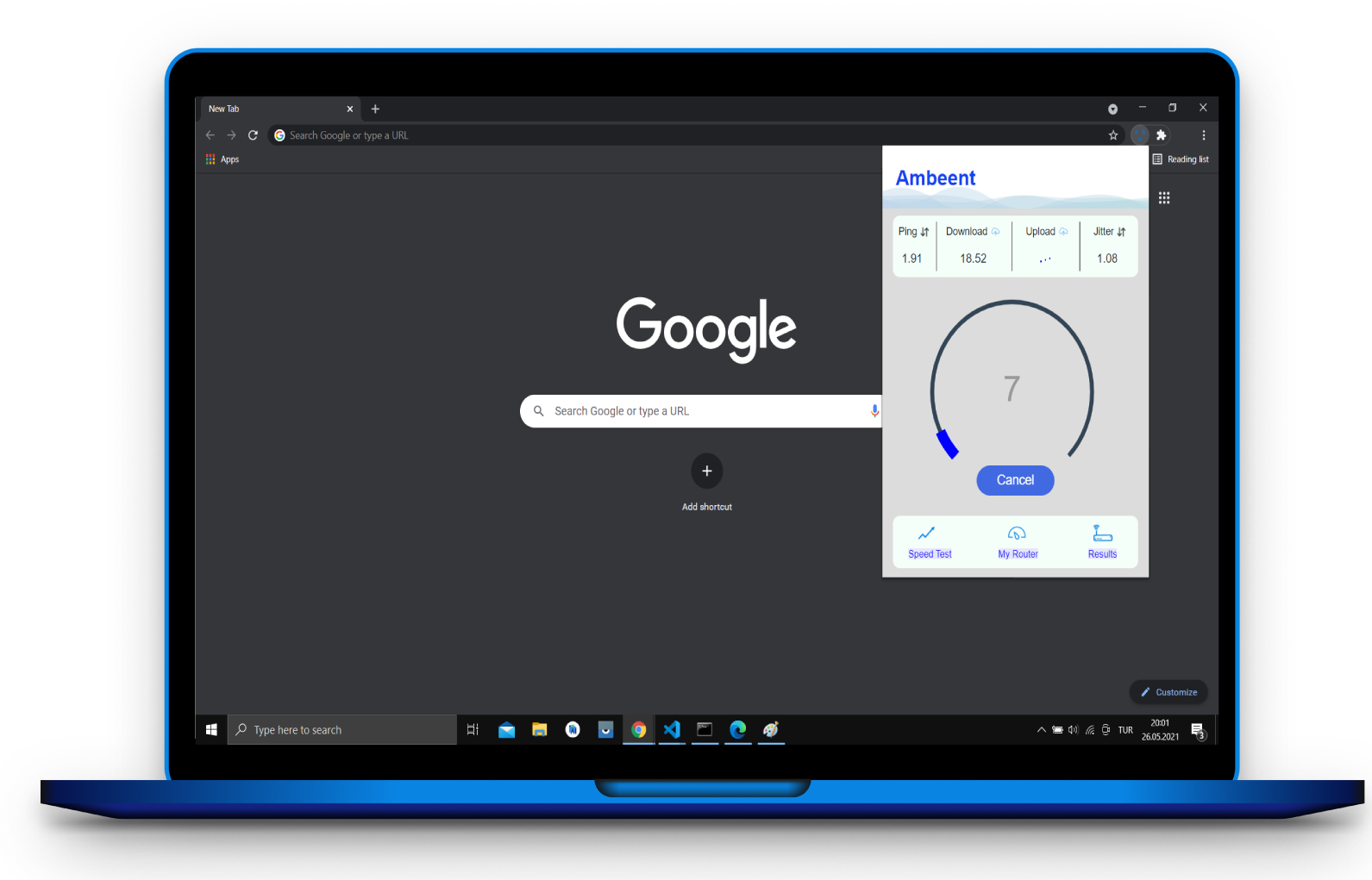
Measure the quality of multimedia applications, improve performance with dynamic solutions
VISIBEEL analyzes and manages video and voice applications in great detail by monitoring metrics such as video bitrate, buffer rate, codec, jitter, packet loss, RSSI, transmitting power, coverage, interference, etc. To obtain optimal bandwidth utilization, and to ensure service delivery and QoE, QoS metrics such as link bandwidth, packet transmission delay, dropping rate, excess Committed Information Rate (CIR), and packet matching rate are centrally monitored.
Swiftly improve QoE/QoS with dynamic solutions that can be implemented manually or automatically based on user/client preference, such as changing the channel, lowering the transmission rate of background traffic, tuning the bitrate/codec, or by having the user move closer to the AP.
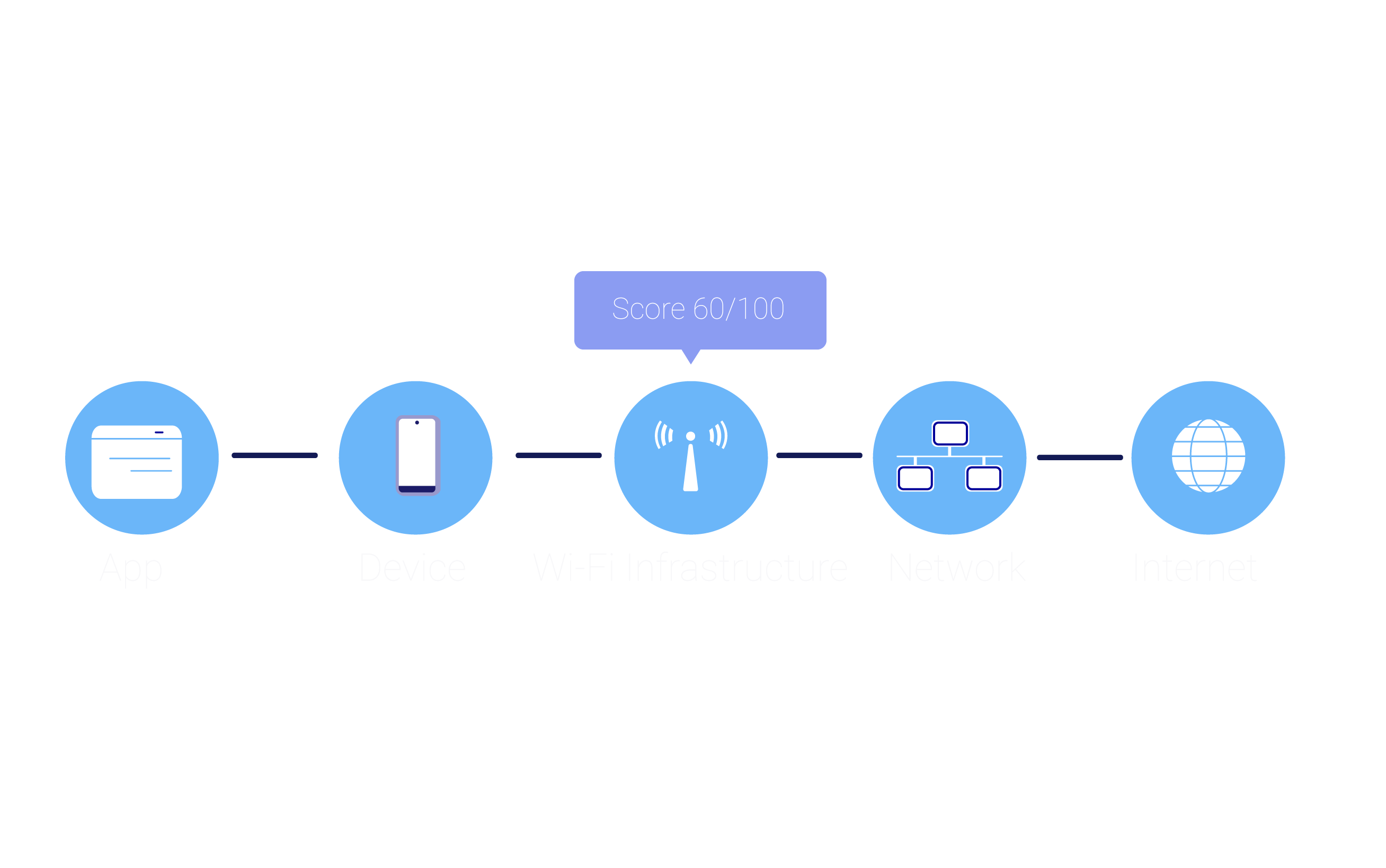
Customer/user satisfaction with end-to-end QoE analysis and QoE scoring
VISIBEEL creates experience scores for delay-tolerant video or voice traffic and applications at each level of the digital supply chain. The performance of network, infrastructure, device, application and service is scored for each user, or for a group of users. Experience scores enable ISP/enterprise network teams and end-users to evaluate the performance of applications.
Click on the Service Quality tab on the VISIBEEL Console to view QoE score cards based on daily or weekly performance.
Drill down to specific metrics and problematic areas such as RTT, response time, and server and network delay.
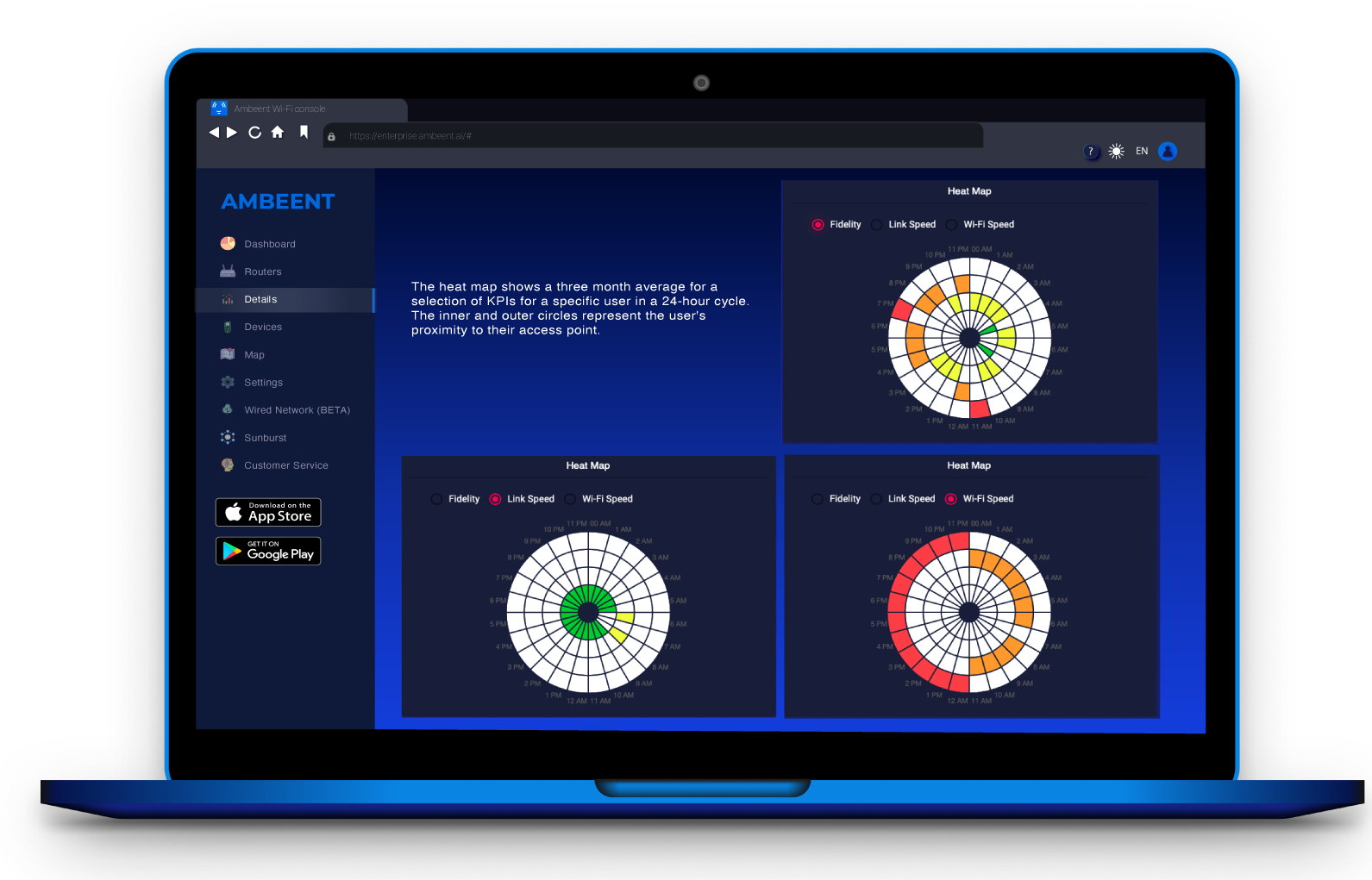
Monitoring usage patterns for smart and dynamic QoE optimization
VISIBEEL combines end-user usage patterns with user-experience data to generate information on wireless signal coverage and interference distribution for each floor, room or space (e.g. in homes, enterprise campuses, universities, hotels, hospitals, etc). The Ambeent App collects precise and dynamic information on end-user usage patterns and movements to assess and optimize QoE based on end-user specifications. Such information includes the number of users connected to an access point, the distribution of end-users across various access points, the specific area from which end-users connect, etc.
The VISIBEEL Console includes heat maps that show the three-month average for a selection of KPIs for a specific users in a 24-hour cycle. The inner and outer circles represent the users proximity to the AP. Network teams can click on problematic areas (indicated in red) for diagnostic details so as to detect signal coverage holes and channel conflict domains quickly, including signal interference of APs, channel quality, and further interference sources. In-home Wi-Fi consumers are similarly empowered to discover the optimal spot for their access point so as to receive the best signal strength possible.
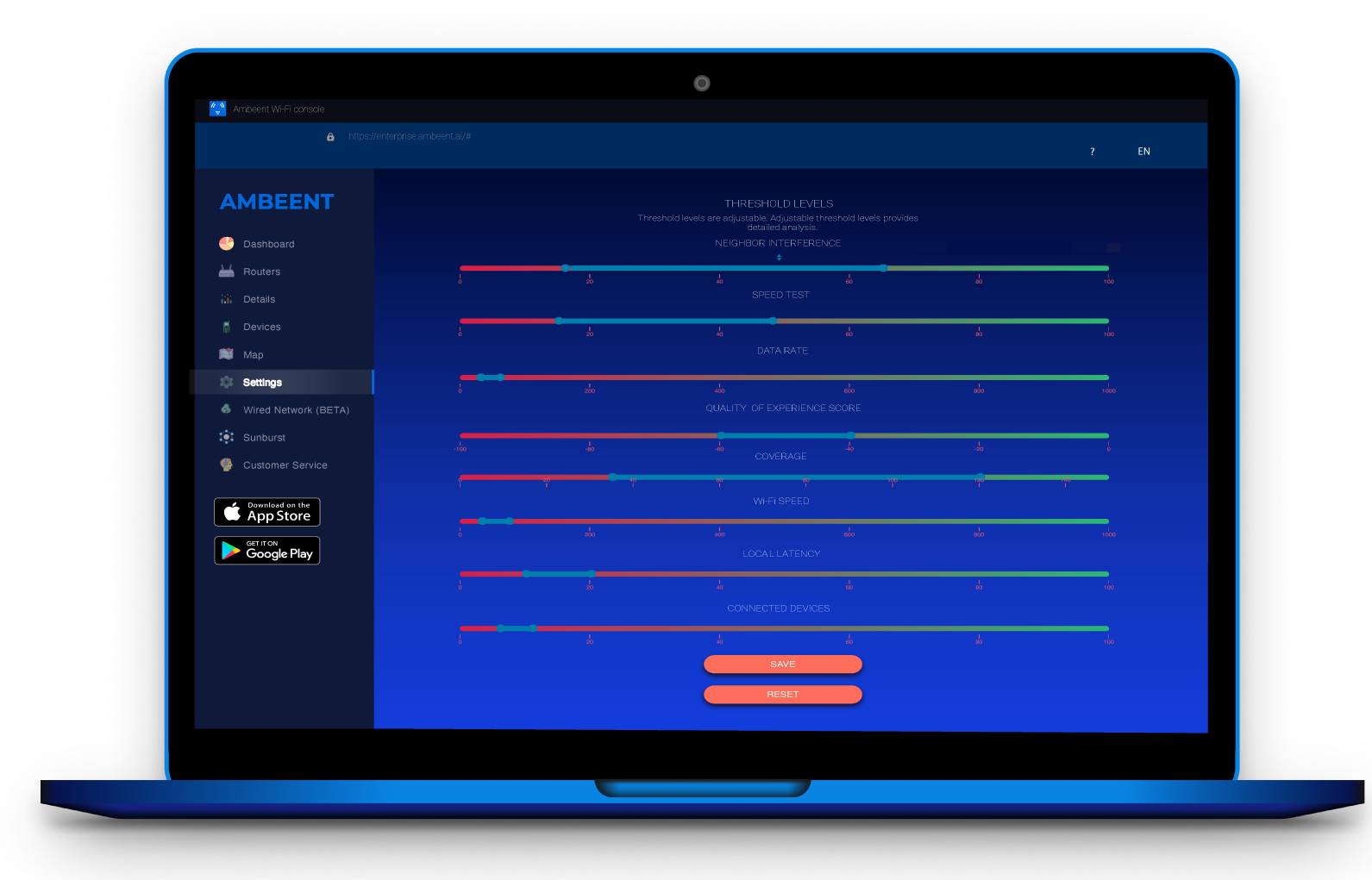
Meet service-level targets with AIOps
VISIBEEL includes a service-level target wizard available to ISPs, enterprises and end-users.
Tune QoE and performance thresholds, such as throughput, end-to-end latency, RSSI, jitter, packet loss rate, buffer ratio, video/audio bitrate, etc., according to your needs.
See whether targets are met within a set time frame for various applications and services and for individual subscribers or employees, or specific groups of subscribers and employees, in a given region or for all subscribers.
Manage video and voice applications with app-specific thresholds, for instance, by establishing different throughput and end-to-end latency targets for video-conferencing, streaming, background data, etc.
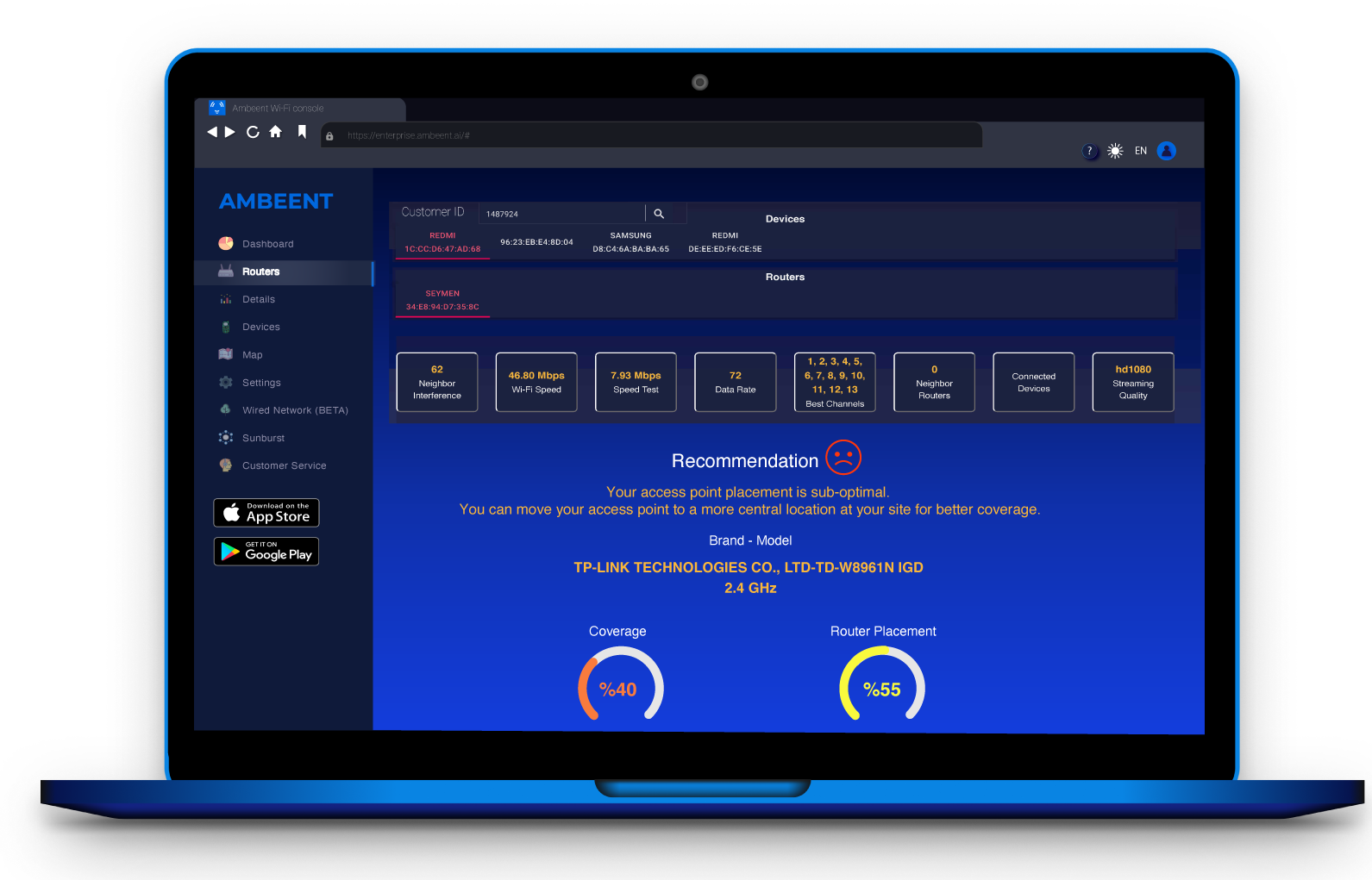
Proactive or real-time interventions to fix performance problems
The VISIBEEL Console empowers ISP/enterprise network teams with actionable recommendations provided in plain English. VISIBEEL also includes a resolution bot that alerts network teams prior to an incident or provides auto-replies to queries posted on the search function; the solutions box on the Console can subsequently be checked for known issues relevant to user or operator infrastructure.
Make proactive or real-time interventions to resolve incidents by sending alerts to subscribers and employees before their QoE is affected.
Reduce average ticket resolution time when subscribers make service calls; for example, by advising subscribers that their AP placement is sub-optimal and that they should therefore move the AP to a more central location at their site. Subscribers and employees are alerted when their CPU, RAM or bandwidth thresholds are exceeded, or warned that their throughput is not sufficient for running multimedia applications at certain times of the day.
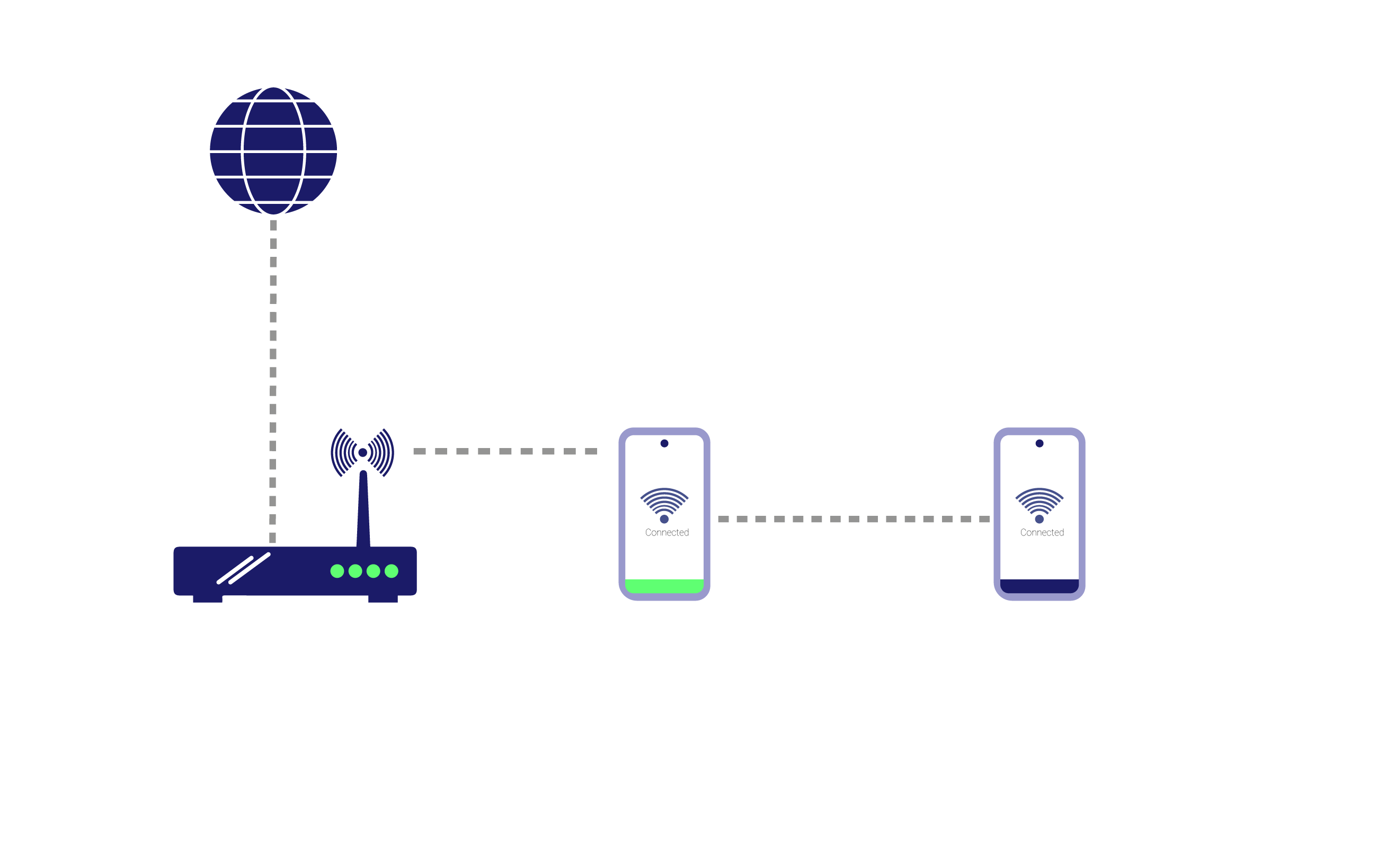
The VISIBEEL ad-hoc Wi-Fi sharing tool
The VISIBEEL ad-hoc Wi-Fi sharing tool enables an end-user beyond the coverage area of an access point to connect via another end-user who is closer to that access point.
Increase access point coverage and resolve coverage issues in indoor locations, such as warehouses, ports and mining facilities, where infrastructure and signal quality are limited.
Read Ambeent’s position paper “Edge on Wheels With OMNIBUS Networking for 6G Technology”
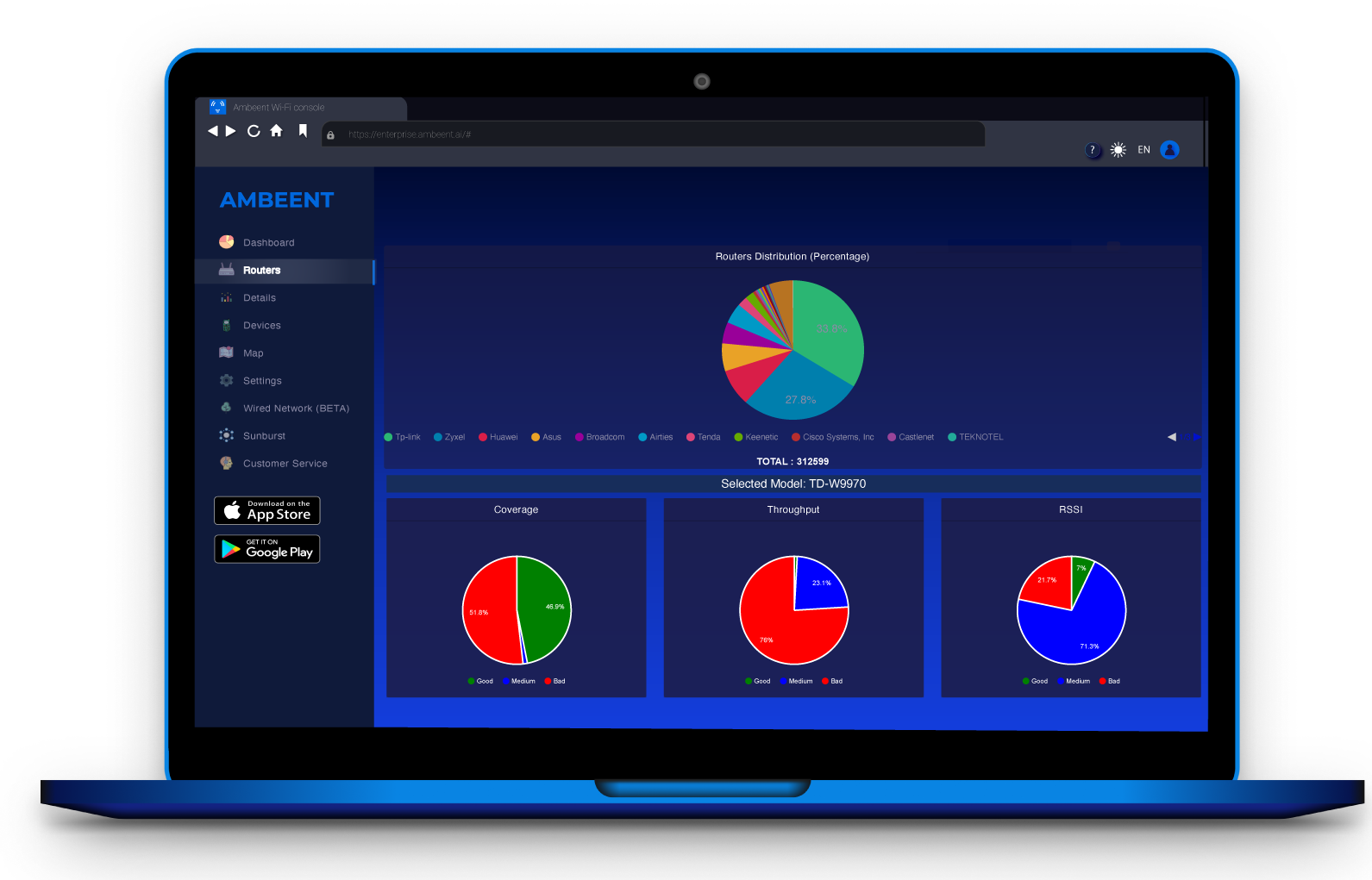
Access Point-rating for smart offloading and handover decisions
SMART WIFI end-point agents installed in the end-user mobile device collect vast sums of data as the end-user moves through multiple locations. Based on these measurements, a rating system established by Ambeent assesses the performance of access points and predicts potential failures. The rating system is used to improve AP selection and the association of end-user devices so as to improve load balancing and enhance QoE: users automatically connect to the AP with the highest rating instead of the AP with the strongest signal strength. VISIBEEL also optimizes channel selection for better load balancing and coverage management in the bands between 2.4 GHz and 5 GHz , and eventually 6 GHz band, supporting Wi-Fi, CBRS and 5G Private.
End-users receive alerts that recommend switching between cellular and Wi-Fi networks, or to upgrade their application services or operating systems, based on their level of experience.
Insights about access points can be integrated into automated cellular offloading decision-making systems.
AMBEENT
Ambeent is an innovator in device centric network intelligence with a mission to enhance digital experiences and help organizations of all sizes meet their connectivity objectives
Company
Contact Us
Solutions
![]() Internet Service Provider
Internet Service Provider
![]() Work from Home
Work from Home
![]() Hospitality
Hospitality
![]() Consumer App
Consumer App
![]() Retail
Retail
![]() Smart City Solutions
Smart City Solutions
![]() Large Venues
Large Venues
![]() Healthcare
Healthcare
![]() Governments
Governments
![]() Manufacturing
Manufacturing
Products
VISIBEEL Platform
![]() Digital Experience Monitoring and Diagnostics
Digital Experience Monitoring and Diagnostics
![]() Synthetic Performance Diagnostics and Forecasting for Network Monitoring and Optimization
Synthetic Performance Diagnostics and Forecasting for Network Monitoring and Optimization
![]() Network Planning and Validation
Network Planning and Validation
![]() Value Added Solutions for Enterprises
Value Added Solutions for Enterprises
![]() Spectrum Optimization and Access Point Configuration in Broadband Networks
Spectrum Optimization and Access Point Configuration in Broadband Networks
AMBEENT INC © COPYRIGHT 2016 - 2025 ALL RIGHTS RESERVED.
